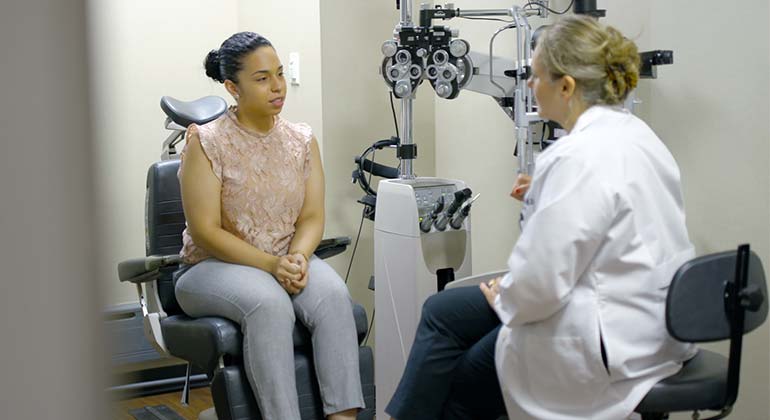Discover Andalusia's Finest Cardiologist Clinics and Services
Discover Andalusia's Finest Cardiologist Clinics and Services
Blog Article
The Pros and Disadvantages of Different Refractive Surgeries for Enhanced Eyecare

LASIK Surgery
LASIK surgery is a typically executed refractive treatment that aims to deal with vision concerns such as astigmatism, nearsightedness, and farsightedness. Throughout the procedure, a slim flap is created on the cornea, and a laser is used to reshape the underlying tissue, dealing with the refractive error.
One of the key advantages of LASIK surgical treatment is the fast enhancement in vision experienced by many people. A lot of people see a significant improvement in their eyesight soon after the procedure, with marginal downtime needed for recuperation. Additionally, LASIK is known for its high success price and low incidence of difficulties when done by knowledgeable surgeons. Nevertheless, like any kind of medical treatment, LASIK also carries some threats, including dry eyes, glow, halos, and under or overcorrection of vision. It is crucial for individuals taking into consideration LASIK surgery to undertake an extensive evaluation by an eye care professional to identify if they are appropriate prospects for the treatment.
PRK Treatment
The PRK procedure, additionally called Photorefractive Keratectomy, is a type of refractive surgical treatment that aims to correct vision issues similar to LASIK surgical treatment. Unlike LASIK, which includes producing a flap in the cornea, PRK deals with the surface area layer of the cornea. During the PRK treatment, the external layer of the cornea, called the epithelium, is gotten rid of to allow reshaping of the underlying corneal tissue with an excimer laser. This improving assists to remedy refractive errors such as nearsightedness, farsightedness, and astigmatism.
Among the benefits of PRK over LASIK is that it eliminates the danger of flap-related complications since no flap is created during the surgery. This can be helpful for people with slim corneas or those associated with get in touch with sports where eye trauma is a possibility. The healing time for PRK is commonly much longer compared to LASIK, as the external layer of the cornea needs time to regenerate after the procedure. Regardless of the longer recovery duration, PRK can be a suitable alternative for people seeking vision improvement surgical procedure.
SMILE Surgical Procedure
A sophisticated refractive surgical procedure strategy acquiring appeal in the field of ophthalmology is SMILE Surgical procedure. Little Laceration Lenticule Removal (SMILE) is a minimally intrusive procedure that deals with vision by improving the cornea using a femtosecond laser. Unlike traditional LASIK surgical treatment, SMILE Surgery includes creating a little laceration in the cornea to remove a lenticule, which results in much less disturbance to the corneal framework and possibly much faster recuperation times.
Among the key advantages of SMILE Surgical procedure is its capacity to treat nearsightedness (nearsightedness) and astigmatism with high accuracy, resulting in exceptional aesthetic end results for individuals. The minimally intrusive nature of the treatment also lowers the danger of problems such as dry eye syndrome, making it a beneficial alternative for individuals looking for refractive surgical treatment.

LASEK Method
Having actually checked out the advantages and considerations of SMILE Surgical procedure, one more notable refractive surgical procedure technique worth checking out is the LASEK Strategy. LASEK, which represents Laser-Assisted Subepithelial Keratectomy, is a kind of laser eye surgical treatment that aims to correct refractive mistakes such as myopia (nearsightedness), hyperopia (farsightedness), and astigmatism.
Unlike LASIK, LASEK does not involve creating a corneal flap. Instead, throughout a LASEK treatment, the specialist uses a diluted alcohol remedy to loosen up the slim outer layer of the cornea, recognized as the epithelium.
Among the primary benefits of LASEK is that it can be ideal for individuals with slim corneas that might not be great prospects for LASIK. Additionally, LASEK normally causes marginal post-operative pain and a quicker recuperation time compared to PRK. However, the visual healing procedure with LASEK may be slightly longer than with LASIK.
Implantable Get In Touch With Lenses
Implantable Contact Lenses supply a long-term you can try here vision improvement solution for individuals seeking an option to traditional get in touch with lenses or glasses. These lenses, additionally referred to as phakic intraocular lenses, are operatively placed into the eye to deal with refractive mistakes such as nearsightedness (nearsightedness), hyperopia (farsightedness), and astigmatism. andalusia pediatrics. Unlike typical contact lenses that remain on the surface area of the eye, implantable call lenses work within the eye itself, offering clear vision without the need for everyday upkeep or elimination
One of the key benefits of implantable get in touch with lenses is their permanence. As soon as inserted, they can remain in the eye indefinitely, supplying regular and steady vision modification. Furthermore, these lenses can be a superb option for people who are bad prospects for laser eye surgery or that prefer a reversible vision adjustment procedure.
Nevertheless, implantable call lenses do lug some dangers, consisting of the capacity for cataracts or increased eye pressure. It is crucial for people considering this alternative to seek advice from an eye care specialist to figure out if implantable call lenses are the right option for their details requirements and eye health and wellness.
Conclusion
In final thought, each kind of refractive surgery has its very own benefits and drawbacks. LASIK surgical procedure is popular for its fast healing time, while PRK procedure may be ideal for patients with thin corneas. SMILE surgical treatment offers marginal discomfort during the procedure, yet LASEK method might have a website here longer healing procedure. Implantable call lenses offer an alternative for those who are not suitable prospects for conventional surgeries. People must seek advice from with their eye treatment supplier to establish the most effective option for their individual needs.

In General, SMILE Surgery provides an encouraging option for individuals looking to improve their vision with refractive surgical procedure.
Report this page